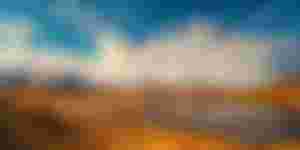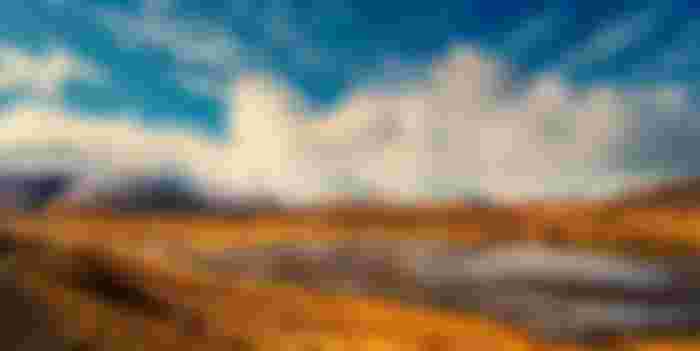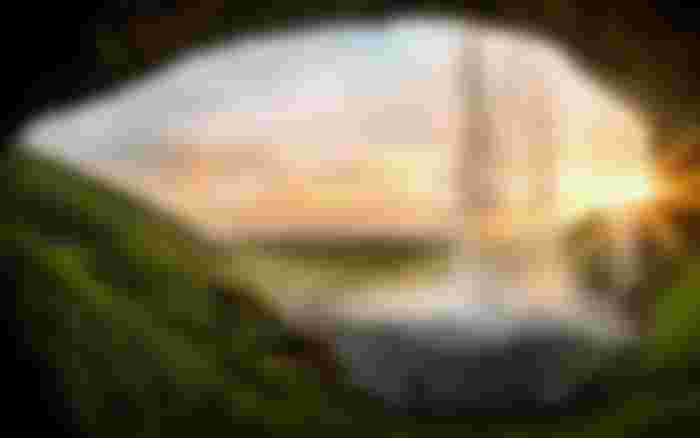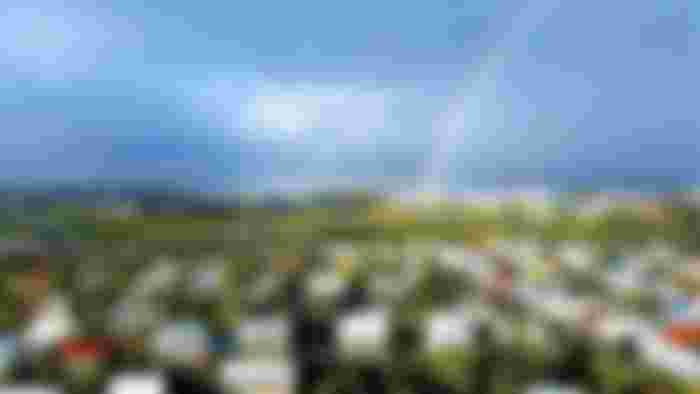You can most often see icebergs in the north or south of the world; for volcanoes you can head to, say, Italy; geysers are an experience to watch in Yellowstone; you can see waterfalls anywhere on the planet ... But you can only see all this in one place in Iceland.
The reason for the very unusual Icelandic landscape is, of course, the legends. Old Nordic legends say that the dwarves who live here are always active at night; they do not want to be seen during the day, so they turn to stones. Hence in Iceland so many diverse rocks and various rocks scattered across the landscape that sometimes seems unreal. That is why Neil Armstrong had preparations on Icelandic soil before going to the moon.

Legends are always interesting, but the real reason for the appearance of the Icelandic landscape is known by geology. This country is often said to be an island of fire and ice. It owes its fire to its volcanic origin. The rocks on which it stands were formed by the cooling of magma that has been coming out of the earth's interior for millions of years in this area. It is still underground today - in the volcanoes that Iceland is full of because it was formed at the crossroads of the Eurasian and American tectonic plates. Iceland, on the other hand, owes 10% of its ice area under ice and some majestic glaciers. But in addition to fire and ice, Iceland is teeming with many other beauties, both those on the ground and those high on the horizon.
So let's go in order…
This island state has several active volcanoes, the most important of which is the Hekla volcano, which Icelanders also call the "gates of hell", and about 20 eruptions have been recorded throughout its history. And the volcano where you will surely break your tongue when you say its name, Eyjafjallajökull, reminded us of its existence in 2010 when it "grounded" Europe because the resulting volcanic dust disrupted much of the air traffic in Europe and North America.
You can climb the numerous Icelandic glaciers, which are mostly located in its interior, accompanied by expert guides. Glaciers will often be intersected by numerous cracks that form when the ice encounters some elevation or unevenness, so it breaks, giving a walk on the glaciers and a somewhat adventurous note. Glaciers often contain inland rivers and caves. In the largest glacier, Langjökull, the tunnel stretches up to 300 meters below its surface and leads to a series of carved rooms illuminated by ice lighting, including a small chapel that can also be used for underground weddings.

The great Icelandic attraction is the so-called Golden Circle, a tourist route where the oldest Thingvellir National Park is located, which is also one of the greatest geological wonders of nature. Here you will walk among the rocks of petrified lava and have a view of the geysers, primarily the Strokkur geyser that erupts every five to ten minutes. The word geyser itself is of Icelandic origin, and the prevalence of hot water springs allows Icelanders hot water and heating at very low prices.
… And there are low electricity prices, thanks to the many rivers and waterfalls whose flow is used to produce electricity. But Iceland’s most beautiful waterfall is still not used to produce electricity, it only produces admiration. Skogar Waterfall (Skogafoss) 62 meters high and bordered by meadows is the introduction to a visit to the carefully landscaped ethno-village Vik known for its bird sanctuary, black volcanic sandy beach, and the fjord Reynisdrangar Cliffs - a lookout with magnificent views.

The fjords are the richest, of course - the coast and most people live there. On the coast is the largest Icelandic city - Reykjavik, which was founded in 870 by the Norwegian Viking Ingólfur Arnarson and gave it its name after the white steam rising from the hot springs there, so the name of the Icelandic capital literally means "smoke bay". As many as 70 percent of Icelanders live there (of which there are just over 300,000 in total). When you tour Reykjavik you will not be sure whether you are in a fairytale village or in a modern capital. This makes Reykjavik a combination of colorful low-rise apartment buildings and the occasional modernist endeavor like a hot water tank with a huge glass dome. Renewable energy tanks will be a common sight in this city because it is known as the cleanest European city precisely because of its renewable water sources. Every day there, geothermal energy from the underground supplies 95% of residential buildings. Their user geothermal heating system is one of the largest and most complex in the world, and has been operating since the 1930s.

Such is Iceland… clean, healthy and beautiful. And you will get to know the latter best at night… away from the city lights. Namely, the northern lights or aurora borealis is undoubtedly the most beautiful Icelandic ornament. It may be best to watch the aurora as part of one of the organized tours, but if you are more experienced, you can venture your way to the north of Iceland. It will be nothing less than - unforgettable.




Legend says Ragnar Lothbork's son, Bjorn Ironside find this beautiful island. With magnificent landscape and natural wealth and so many thermal water sources, it is very atractive for living and visiting from tourists.